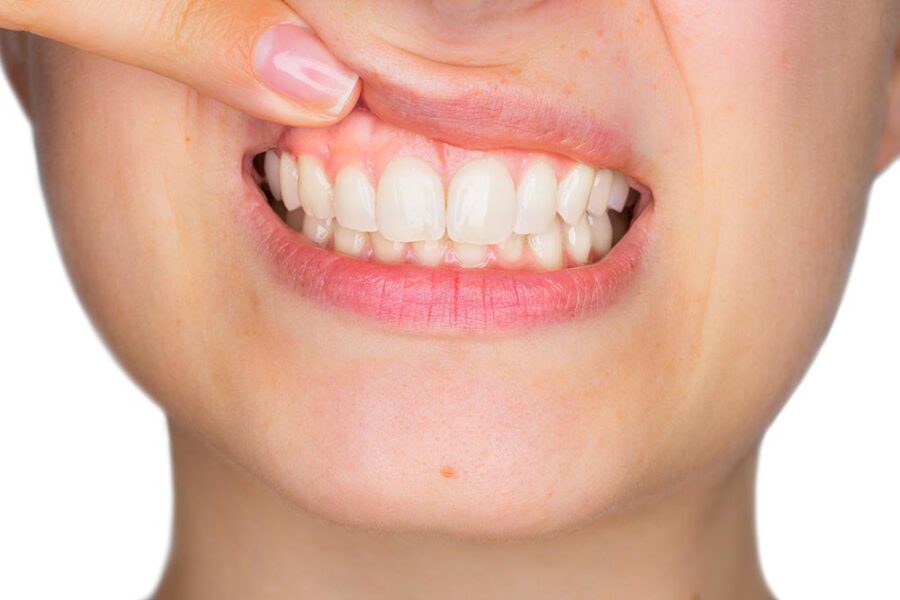Gingivitis is a common form of gum disease that affects about 75% of adults. Because it is so common, understanding gingivitis is important to your oral health.
What is Gingivitis?
- Gingivitis is an early stage of gum disease that is usually painless but can cause damage if left untreated. Plaque on the teeth and under the gums is the source of the problem. Plaque bacteria creates toxins in the mouth that irritate gum tissue and trigger an inflammatory response that is called Gingivitis.
What Causes Gingivitis?
- Bacteria is the main reason for gingivitis. In the mouth, bacteria are present in plaque, which is the soft & sticky substance that builds on the teeth and under the gums daily. If plaque bacteria are left unremoved, the toxins that they produce are recognized by the body’s immune system, which causes the body to create inflammation to try to fight the bacterial invasion.
This inflammatory response can be exacerbated by other risk factors such as certain health issues and medications, smoking, hormonal changes, stress, and genetics.
Poor oral homecare and lack of professional dental care can also increase risk of gingivitis.
If left untreated, gingivitis can worsen and lead to a more severe stage of gum disease called periodontitis, which can lead to a more serious infection and the loss of teeth and supporting jawbone.
What Are the Symptoms of Gingivitis?
- Gingivitis can sometimes be hard to detect because it often occurs without symptoms. However, signs and symptoms such as red, puffy, sensitive, or bleeding gums are common in gingivitis. Although just as common, bad breath is also a sign of gingivitis because bad breath or a bad taste in the mouth is caused by plaque bacteria
Healthy gums do not bleed! If you see pink in the sink when you brush or floss, you could have gingivitis.
Can Gingivitis Be Prevented & Treated?
Gingivitis can be prevented with proper homecare, regular dental visits, and recognition of personal risk factors.
Prevention can include the following:
- Brush – Brush your teeth twice a day for 2-minutes. Always use a soft toothbrush or a high-quality power toothbrush. Replace your brush at least every three months.
- Floss – Clean between your teeth is necessary to remove the harmful plaque bacteria from under your gums. Traditional floss or water flossers can be effective methods.
- Rinse – Adding an antibacterial mouth rinse after brushing and flossing helps to kill additional bacteria.
- Stop smoking – By quitting or at least reducing the use of tobacco, you create a healthier environment within your mouth. You allow your body to fight bacteria and reduce the inflammatory response more effectively.
- Reduce stress – By recognizing stress as a risk factor, you can attempt to reduce stress or increase your oral homecare during stressful periods of time.
- Stay healthy – Since certain health issues can affect gums, maintaining good health by following your physician’s recommendations, eating healthy foods, and exercising regularly can boost your immune system.
- Visit your dentist – Regular dental cleanings can remove bacteria that you cannot reach. In addition, regular exams include a screening for gum disease so that if you have gingivitis, it can be treated early.
If signs & symptoms or risk factors for gingivitis exist, several treatment options exist because successful treatment usually means just simply reducing bacteria in and around your gums.
Treatment for gingivitis includes the following:
- Increased oral homecare – Adding more frequency and dental cleaning tools to your usual routine can improve the health of your gums and even reverse gingivitis.
- More frequent professional dental cleanings – Professional cleanings help to remove toxins from deeper under the gums in areas that cannot be reached with homecare tools. These toxins can be removed before gingivitis has time to occur.
Keep in mind that gingivitis is reversible but can also lead to more severe gum disease if it is left untreated. Through your good oral homecare and regular visits to your dental professionals, you can help prevent it from occurring.
If you do have signs and symptoms of this relatively silent form of gum disease, you, your dentist, and your periodontist can work together to treat gingivitis simply by reducing bacteria and risk factors.
